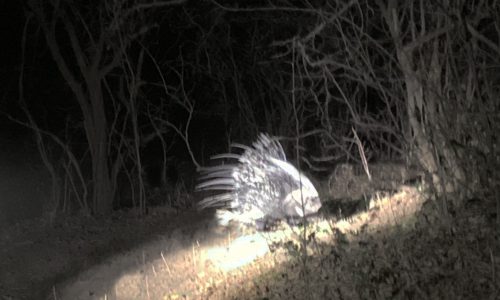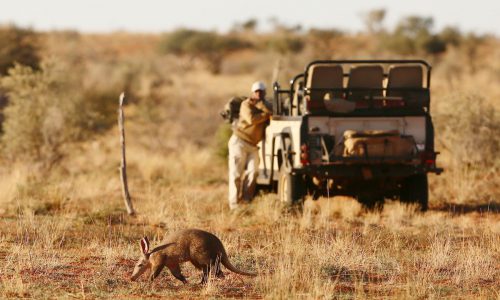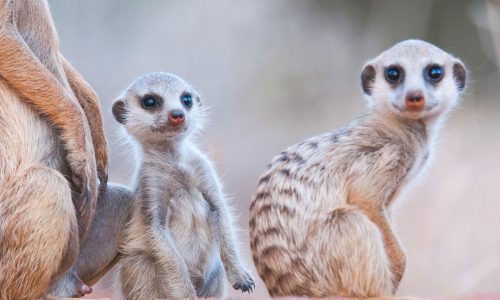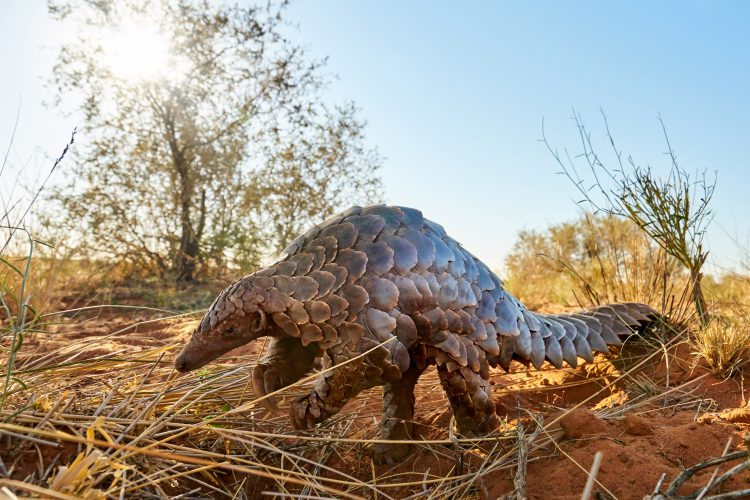We have all heard of the Big Five, and while out on game drives, most of us learn about the Little Five sooner or later. There are also the unfortunate Ugly Five and even a Funny Five. When it comes to animals that are rarely seen, some refer to the Shy Five, but we have made up our own list to include two more:
 Porcupines, even though their name originates from the Latin porcus (pig) and spina (spine/quill), are actually large rodent herbivores with highly developed and pretty spectacular defense mechanism. Even though they are relatively common in East and Southern Africa, they are rarely seen because they mostly forage at night. During the day they shelter among rocky hills and outcrops in caves, antbear holes or dens that can be over 20 yards long leading to living chambers up to 6 feet deep. Their bodies are covered in up to 30,000 keratinous quills that are very lightly attached and come off easily during encounters with predators, but grow back like hair or nails.
Porcupines, even though their name originates from the Latin porcus (pig) and spina (spine/quill), are actually large rodent herbivores with highly developed and pretty spectacular defense mechanism. Even though they are relatively common in East and Southern Africa, they are rarely seen because they mostly forage at night. During the day they shelter among rocky hills and outcrops in caves, antbear holes or dens that can be over 20 yards long leading to living chambers up to 6 feet deep. Their bodies are covered in up to 30,000 keratinous quills that are very lightly attached and come off easily during encounters with predators, but grow back like hair or nails.- Bat-eared Foxes live mostly in short-grass plains and where there are plenty of termites and beetles. They are not believed to be endangered, but they have good reason to be shy. Due to human encroachment, their habitat is shrinking, and in some parts, they are hunted for their skins or hounded as pests. Those adorable large ears are not for nothing – it is said that they can hear beetle larvae hatching from dung balls. They rely heavily on their very keen sense of hearing, amazing agility, and speed, to escape predators. Considering that one of these foxes can consume over a million termites per year, they play an important role in termite control.
 Aardwolves (earth wolves) are an insectivorous species of hyena, consuming up to 250,000 termites per night with its long, broad, sticky tongue. While they do have the claws to dig holes in a ground, aardwolves prefer abandoned burrows of other animals such as aardvarks and porcupines during the day. They form socially monogamous mating pairs and help raise their young together for up to a year. While the female forages, the males will guard the den, using their manes to appear larger and as a warning signal to chase the intruder away.
Aardwolves (earth wolves) are an insectivorous species of hyena, consuming up to 250,000 termites per night with its long, broad, sticky tongue. While they do have the claws to dig holes in a ground, aardwolves prefer abandoned burrows of other animals such as aardvarks and porcupines during the day. They form socially monogamous mating pairs and help raise their young together for up to a year. While the female forages, the males will guard the den, using their manes to appear larger and as a warning signal to chase the intruder away.- Aardvarks (earth pigs), also called ant bears, have the snout of a pig, large ears like a rabbit, and a long tongue which extends up to 12 inches. The front feet have lost the pollex (or ‘thumb’), leaving them with only four toes but the rear feet have all five toes. They mostly feed on ants and termites and can dig up to 2 feet in 15 seconds, but never destroy a whole termite mound. Only harvesting what they need from each site, they leave the termites to fix up the damage, and visit again in a few weeks to feed again. They grow to be 130 to 180 pounds, and although colorblind, they have excellent night vision.
 Pangolins get their name from the Malay word pengguling, meaning ‘one who rolls up’, because they roll into a ball when they feel threatened. Also known as “scaly anteaters” and often thought to be related to anteaters and armadillos, they are in fact more closely related to cats, dogs, and bears. The only scaled mammals on earth, pangolins are unfortunately the world’s most trafficked mammals, hunted for the illicit trade in their meat, skin and scales, which are keratinous like hair or nails, and make up about 20 percent of their body weight.
Pangolins get their name from the Malay word pengguling, meaning ‘one who rolls up’, because they roll into a ball when they feel threatened. Also known as “scaly anteaters” and often thought to be related to anteaters and armadillos, they are in fact more closely related to cats, dogs, and bears. The only scaled mammals on earth, pangolins are unfortunately the world’s most trafficked mammals, hunted for the illicit trade in their meat, skin and scales, which are keratinous like hair or nails, and make up about 20 percent of their body weight.- Dugong, sometimes known as “sea cows”, yet also believed to have inspired the legends of mermaids, are in fact directly related to Elephant, and cousins to manatees. (They share a plump appearance, but with a dolphin-like fluke-shaped tails). These docile animals graze peacefully on sea grasses in shallow waters growing up to 70 years old. Even though the Dugong’s brain makes up only 0.1% of its bodyweight, and their eyesight limited, they communicate with one another through sophisticated echoing chirps, whistles, and barks, and they can remember and return to specific feeding areas after traveling miles away.
 Meerkats are not cats, but mongooses, and true omnivores. They eat fruit, nuts, vegetables, spiders, insects, small rodents, birds, eggs, and lizards and are immune to the venom of snakes and scorpions (on which they also like to feed). They don’t drink water and survive in their desert environments getting all the moisture they need from the grubs they consume. Their long, horizontal pupils give them a wide range of vision without turning their heads around, and the dark patches around their eyes cut down glare from the sun to help them see far into the distance. Their complex coordinated social behavior, rivals that of chimps, baboons, dolphins and even humans.
Meerkats are not cats, but mongooses, and true omnivores. They eat fruit, nuts, vegetables, spiders, insects, small rodents, birds, eggs, and lizards and are immune to the venom of snakes and scorpions (on which they also like to feed). They don’t drink water and survive in their desert environments getting all the moisture they need from the grubs they consume. Their long, horizontal pupils give them a wide range of vision without turning their heads around, and the dark patches around their eyes cut down glare from the sun to help them see far into the distance. Their complex coordinated social behavior, rivals that of chimps, baboons, dolphins and even humans.
If you have encountered any of these on your travels in Africa, please feel free to share your pictures! For all the obvious reasons, we don’t have many of our own…
